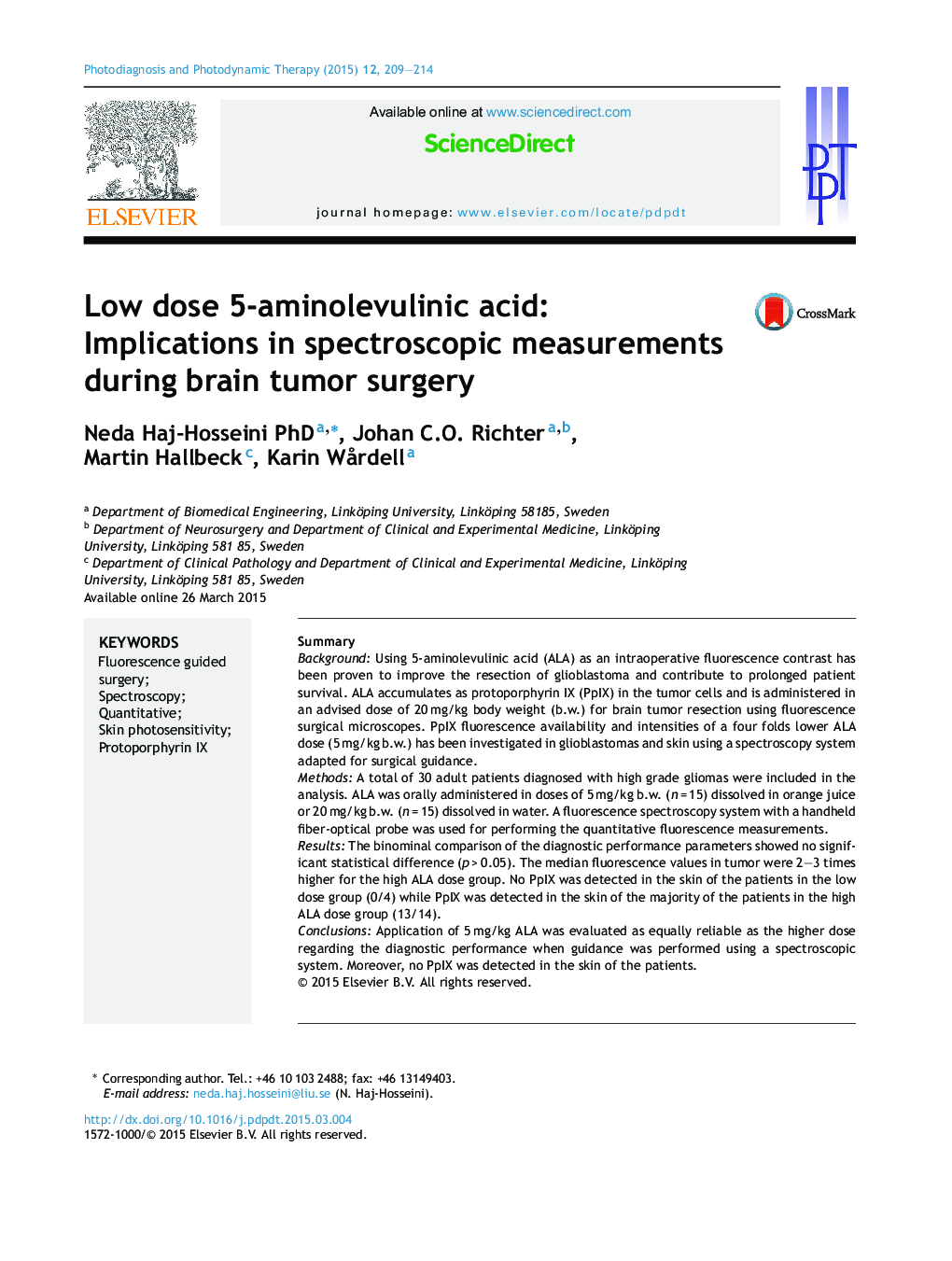| Article ID | Journal | Published Year | Pages | File Type |
|---|---|---|---|---|
| 3816626 | Photodiagnosis and Photodynamic Therapy | 2015 | 6 Pages |
•Clinical implications of a low ALA dose was investigated for brain tumor surgery.•A total of 30 patients were included in the study.•Fluorescence spectroscopy was used for detection and the signals were quantified.•The low ALA dose had equally reliable diagnostic performance as the high ALA dose.•No ALA-induced Protoporphyrin IX was detected in skin of the low dose group patients.
SummaryBackgroundUsing 5-aminolevulinic acid (ALA) as an intraoperative fluorescence contrast has been proven to improve the resection of glioblastoma and contribute to prolonged patient survival. ALA accumulates as protoporphyrin IX (PpIX) in the tumor cells and is administered in an advised dose of 20 mg/kg body weight (b.w.) for brain tumor resection using fluorescence surgical microscopes. PpIX fluorescence availability and intensities of a four folds lower ALA dose (5 mg/kg b.w.) has been investigated in glioblastomas and skin using a spectroscopy system adapted for surgical guidance.MethodsA total of 30 adult patients diagnosed with high grade gliomas were included in the analysis. ALA was orally administered in doses of 5 mg/kg b.w. (n = 15) dissolved in orange juice or 20 mg/kg b.w. (n = 15) dissolved in water. A fluorescence spectroscopy system with a handheld fiber-optical probe was used for performing the quantitative fluorescence measurements.ResultsThe binominal comparison of the diagnostic performance parameters showed no significant statistical difference (p > 0.05). The median fluorescence values in tumor were 2–3 times higher for the high ALA dose group. No PpIX was detected in the skin of the patients in the low dose group (0/4) while PpIX was detected in the skin of the majority of the patients in the high ALA dose group (13/14).ConclusionsApplication of 5 mg/kg ALA was evaluated as equally reliable as the higher dose regarding the diagnostic performance when guidance was performed using a spectroscopic system. Moreover, no PpIX was detected in the skin of the patients.
